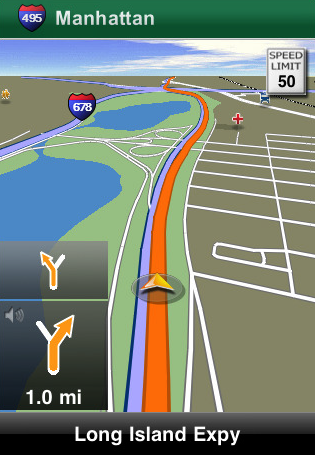17” MacBook Pro: Billeted With Balls
 Saturday, August 22, 2009 at 9:44AM
Saturday, August 22, 2009 at 9:44AM After six weeks with my new MacBook Pro I am as enthusiastic about recommending it today as I was the first week I owned it. This beast isn’t for everyone and sometimes even I (a completely butched-up Texian type guy) wish it were just a tad more portable, but if you need a laptop capable of virtually any task a desktop machine can handle, this beauty is as good as it gets.
This machine:
3.06 GHz Intel Core 2 Duo
4 GB 1066 Ram
256 GB Apple SSD
has all the guts one could ask for in a portable computer but the build quality of this “unibody” laptop is its most impressive feature. People who claim this 6.6 pound 17” version of Apple’s latest MacBook Pro line is too big to be “really portable” are often the same jackballs that gladly carried a 15” Dell D series Latitude (the most popular laptop ever) a couple of years ago. That machine was a full 1 pound heavier and 50% thicker than this new 17” MBP. If you can carry a 15” HP (6.1 lbs.) you wouldn’t even notice the difference if weight were your only concern. When you compare this Mac to the current 17” offerings from Dell, HP and others, it is the most portable 17” on the market, by far. Dell’s “Studio 17” starts at 7.9 pounds, gets incrementally heavier as you add features and uses a “brick” style power adapter that’s 50% bigger and heavier than the Apple equivalent. When I consider what I need to put in my bag to be truly portable, I always include the power adapter. I mean, really? Do you ever leave the house with your computer without some way to power it? The afore-mentioned Dell system weighs in at 10 pounds when you consider the machine and the “brick” needed to keep it charged. The 17” MacBook Pro setup weighs just 7 lbs. and you could arguably leave the power adapter at home given the new non-user-replaceable battery will last over six hours (my real world experience).
Sculpted, not stamped.
Apple has done what was once considered nearly impossible. With the switch to the unibody manufacturing technique they created a sturdy 17” portable computer with all the horsepower 99% of users will ever need in a package less than one inch thick. The key word here is sturdy. This thing looks and feels like a solid slab of aluminum when closed and when opened the fit and finish of the new MBP is the most precise I’ve ever seen. When I buy parts for my Harley, the machined type or "billeted" parts machined from a solid piece of metal (like the MBP’s unibody) are double the price of their forged metal equivalent but look infinitely better and last twice as long. By comparison, my previous (late 2007 17” MBP) laptop, while quite a nice computer, seems almost flimsy.
Prepare for ludicrous speed!
When you add an SSD to this new configuration, you can add the words “rugged” and “f-ing fast” to the list of adjectives used to describe it. I’m still amazed by this Mac’s 38 second boot time (with all my startup apps included) and most all other apps launch instantly. For example, when I start Mail, iCal, Address Book and many others it feels more like I’m un-hiding them. Double-click an app’s icon and pop, it’s there. I’ve never used any computer that feels so responsive. Apple’s SSDs don’t offer the extremely high read and write speeds of some other brands, but in the real world, random read speed (multiple small reads scattered across a disk) is what really counts when booting or launching apps and the near-zero latency typical of all SSDs (Apple’s included) is where most users see real performance gains. Now, when I use my 24” iMac (Late 2008, 2.8 GHz, 4GB) it feels almost sluggish by comparison. It’s still difficult to justify the $650 price tag for the 256 GB SSD upgrade, but I’m spoiled now and don’t want to live without it. I’m convinced that adding a SSD is by far the single, best way to increase a machine’s performance, if you can stomach the cost.
As for other performance aspects, the 1066 MHz front-side bus and memory coupled with the latest top o’ the line Intel meat grinder is as good as you’ll find in any laptop. Benchmarks aren’t my thing, but the ones I’ve seen put this box right at the top of the heap. The keyword here is laptop, so it doesn’t make sense to think you can render hours of 1080p video that would choke an 8 core Mac Pro, but there’s little else this portable won’t do. I certainly don’t hesitate tackling any chore normally reserved for my iMac.
Wide open spaces.
Lets face it, the 1920 X 1200 display is really why you buy the 17” model and nobody offers anything comparable in a package nearly as compact as the unibody MBP. Screen “real estate” is always a concern of mine and I frequently don’t have the luxury of hooking up an external monitor. While only 2” bigger (measured diagonally), the 17” MBP provides 44% more screen (pixels) than its 15” little brother and the extra space really comes in handy. I chose the default glossy display because my machine is used almost exclusively in an office environment where glare is not an issue, but I also think the color saturation and sharpness of the glossy display is far superior to the $50 anti-glare (matte) “upgrade”. (I’ve always wondered why the pixel density of laptop displays is so much higher than what you can buy in a comparably sized desktop LCD. The best resolution I can find in a 17” wide format desktop model is 1440 X 900. Just curious. If anyone has a good explanation for this, please leave a comment.)
It costs a little more to go first class.
If you’re from south Florida or if you just couldn’t tell, I’m absolutely in love with this machine. It is beautifully constructed, aesthetically pleasing, rugged and blazingly fast. At $3449 it is not cheap by any measure, but when I consider the two desktop machines it replaces, that price doesn’t sting quite so badly. Besides, if price were my primary consideration, I’d be like one of those goobers in a “I’m a PC” commercial shopping for a plastic laptop at WalMart. Is this a machine for the masses? Of course not, but if you’re searching for a desktop replacement with more ponies than you can harness, in the most beautiful, well-built package available, this 17” MacBook Pro will get you there fast and in fine style.





